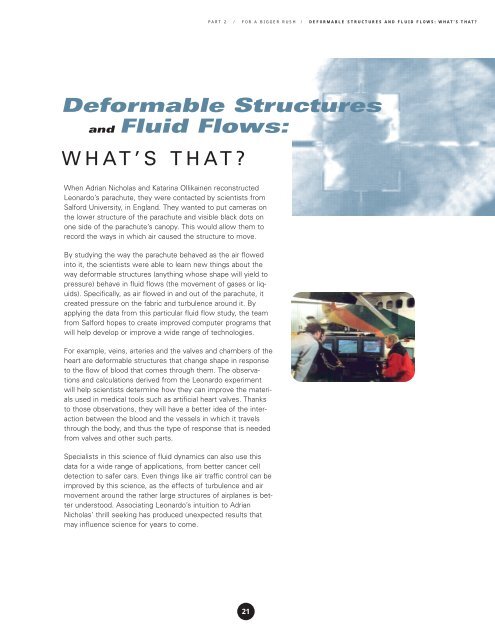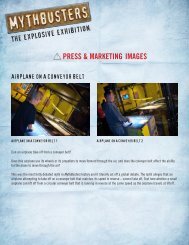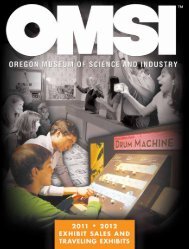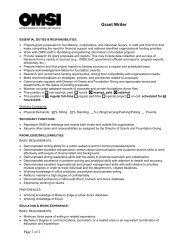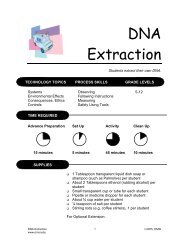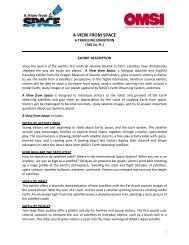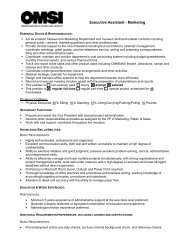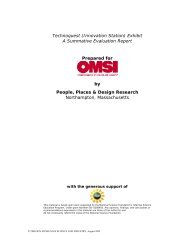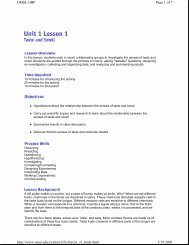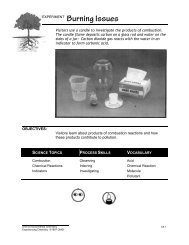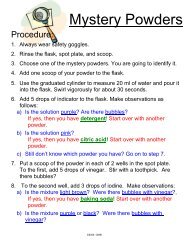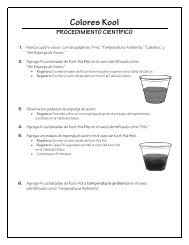ADRENALINE RUSH: THE SCIENCE OF RISK - Big Movie Zone
ADRENALINE RUSH: THE SCIENCE OF RISK - Big Movie Zone
ADRENALINE RUSH: THE SCIENCE OF RISK - Big Movie Zone
Create successful ePaper yourself
Turn your PDF publications into a flip-book with our unique Google optimized e-Paper software.
PART 2 / FOR A BIGGER <strong>RUSH</strong> / DEFORMABLE STRUCTURES AND FLUID FLOWS: WHAT’S THAT?<br />
Deformable Structures<br />
and Fluid Flows:<br />
WHAT’S THAT?<br />
When Adrian Nicholas and Katarina Ollikainen reconstructed<br />
Leonardo’s parachute, they were contacted by scientists from<br />
Salford University, in England. They wanted to put cameras on<br />
the lower structure of the parachute and visible black dots on<br />
one side of the parachute’s canopy. This would allow them to<br />
record the ways in which air caused the structure to move.<br />
By studying the way the parachute behaved as the air flowed<br />
into it, the scientists were able to learn new things about the<br />
way deformable structures (anything whose shape will yield to<br />
pressure) behave in fluid flows (the movement of gases or liquids).<br />
Specifically, as air flowed in and out of the parachute, it<br />
created pressure on the fabric and turbulence around it. By<br />
applying the data from this particular fluid flow study, the team<br />
from Salford hopes to create improved computer programs that<br />
will help develop or improve a wide range of technologies.<br />
For example, veins, arteries and the valves and chambers of the<br />
heart are deformable structures that change shape in response<br />
to the flow of blood that comes through them. The observations<br />
and calculations derived from the Leonardo experiment<br />
will help scientists determine how they can improve the materials<br />
used in medical tools such as artificial heart valves. Thanks<br />
to those observations, they will have a better idea of the interaction<br />
between the blood and the vessels in which it travels<br />
through the body, and thus the type of response that is needed<br />
from valves and other such parts.<br />
Specialists in this science of fluid dynamics can also use this<br />
data for a wide range of applications, from better cancer cell<br />
detection to safer cars. Even things like air traffic control can be<br />
improved by this science, as the effects of turbulence and air<br />
movement around the rather large structures of airplanes is better<br />
understood. Associating Leonardo’s intuition to Adrian<br />
Nicholas’ thrill seeking has produced unexpected results that<br />
may influence science for years to come.<br />
21


